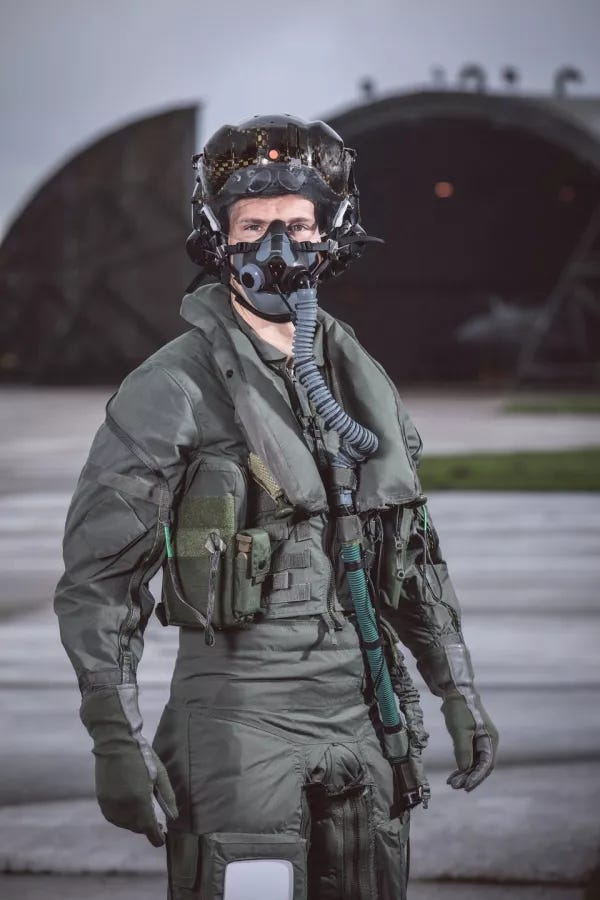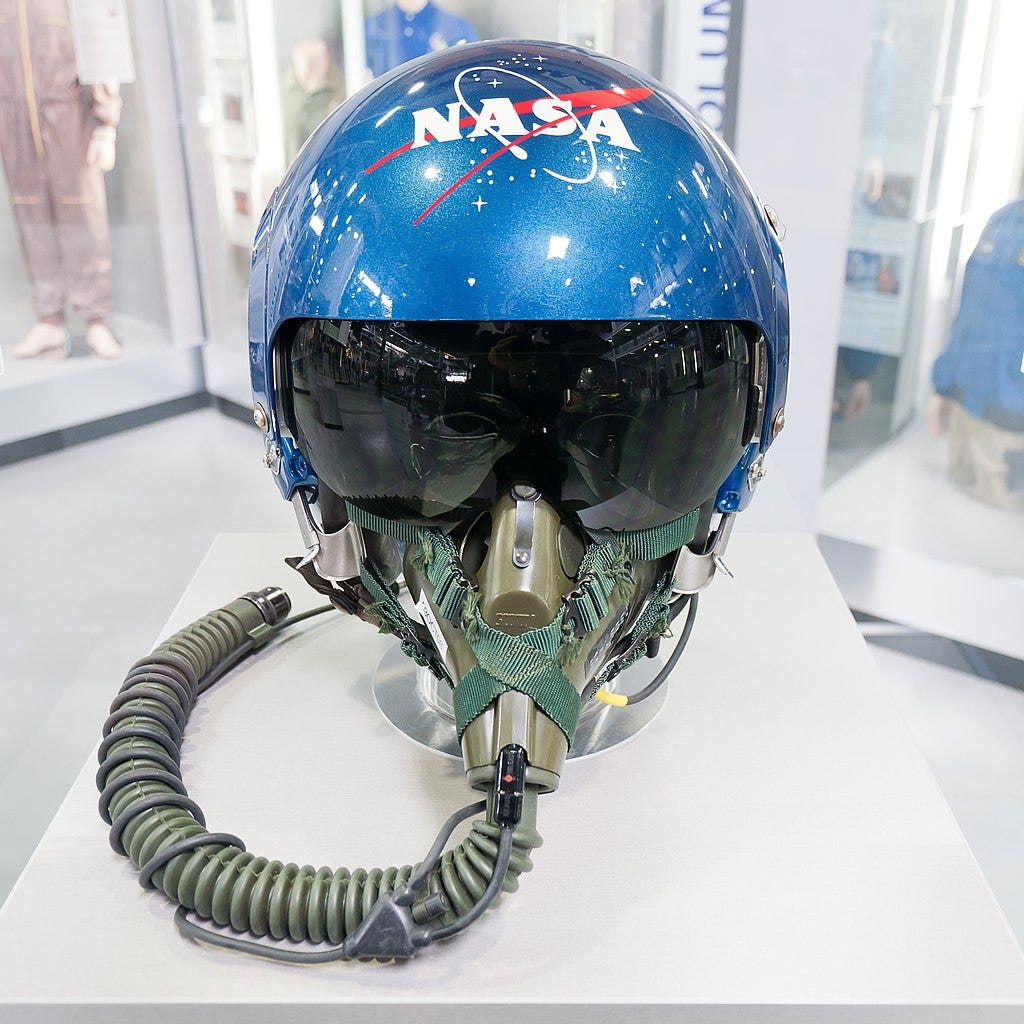








For daily educational comics check us on Instagram :-)
Fighter pilots operate in extreme environments, facing high G-forces, rapid altitude changes, and combat threats. Their gear is designed to enhance performance, ensure safety, and aid survival in critical situations. Below is a detailed, paragraph-wise breakdown of the essential accessories used by fighter pilots.
1. G-Suit (Anti-G Suit)
A G-suit (Gravity Suit) helps fighter pilots counteract the effects of high G-forces experienced during sharp turns and rapid accelerations. Without it, blood would pool in the lower body, leading to G-LOC (G-force Induced Loss of Consciousness). The suit is equipped with inflatable air bladders, which are automatically controlled by the aircraft's pneumatic system. When the pilot pulls high Gs, these bladders inflate, compressing the legs and abdomen to keep blood flowing to the brain. Modern G-suits, such as the ATAGS (Advanced Technology Anti-G Suit) used in the F-22 and F-35, allow pilots to endure up to 9 Gs without blacking out, ensuring they remain combat-effective in extreme conditions.
2. Flight Helmet
A fighter pilot’s helmet is far more than just head protection—it is an advanced sensory and targeting system. Built with Kevlar or carbon-fiber composites, it provides impact resistance and serves as a mounting platform for oxygen masks, visors, and communication systems. High-tech helmets, such as the F-35 Gen III Helmet, include a Helmet-Mounted Display (HMD), which projects flight data, targeting information, and even infrared night vision directly onto the visor. This allows pilots to "see through" the aircraft, improving their situational awareness. Additionally, helmets are equipped with an Active Noise Reduction (ANR) system, filtering out jet engine noise while ensuring clear radio communication.
3. Oxygen Mask
Since fighter jets operate at high altitudes where oxygen levels are low, pilots require a continuous oxygen supply to prevent hypoxia (oxygen deprivation). The MBU-20/P Oxygen Mask delivers positive-pressure oxygen, meaning it actively pushes oxygen into the lungs, ensuring sufficient airflow even under high G-loads. Connected to the aircraft’s On-Board Oxygen Generation System (OBOGS), it eliminates the need for carrying separate oxygen tanks. The mask also integrates a microphone for communication, allowing pilots to stay in contact with their squadron and ground control.
4. Flight Suit
A pilot's flight suit is their first line of defense against fire, cold temperatures, and environmental hazards. Made from Nomex, a fire-resistant aramid fiber, it protects against flash fires and extreme heat. Flight suits are designed to be lightweight yet durable, with multiple pockets to store essential survival tools. They also feature layered insulation to keep pilots warm at high altitudes, where temperatures can drop below freezing. In high-speed ejections, flight suits help prevent abrasions and minor injuries caused by rapid wind exposure.
5. Ejection Seat Harness & Survival Gear
In case of an emergency, a pilot may need to eject at high speeds, sometimes over hostile or remote terrain. The ejection seat harness secures the pilot to the ACES II or Martin-Baker Mk16 ejection seat, ensuring a safe and stable ejection process. Upon ejection, the seat automatically deploys a parachute and activates an emergency survival kit. This kit typically includes a radio beacon (PRC-112) for rescue location, a flare gun, an inflatable life raft (for water landings), and rations for extended survival in remote areas. Modern ejection seats are designed to function even at zero altitude and zero airspeed, making them lifesaving tools in combat scenarios.
6. Anti-Exposure Suit (For Overwater Flights)
Pilots flying over oceans or cold regions wear an anti-exposure suit, also called a dry suit, to protect against hypothermia in case of water ejection. Made from Neoprene or Gore-Tex, it provides thermal insulation while preventing water from seeping in. The suit is lightweight and flexible, allowing full movement while still offering protection from extreme temperatures. The MSF300 Anti-Exposure Suit, commonly used by Navy fighter pilots, has been credited with saving lives in emergency water landings.
7. Night Vision Goggles (NVGs)
For nighttime operations, pilots use Night Vision Goggles (NVGs) to enhance visibility in low-light conditions. These goggles use image intensification technology, amplifying ambient light (such as moonlight or starlight) to create a clear, brightened view of the surroundings. Mounted on the helmet rail system, NVGs provide hands-free operation, allowing pilots to focus on flying. Advanced NVGs, such as the AN/AVS-9, integrate with Helmet-Mounted Displays (HMDs) for seamless targeting and navigation.
8. Communication & Tactical Gear
Modern air combat relies on real-time coordination, requiring advanced communication and data-sharing systems. Pilots use secure VHF/UHF radios to communicate with ground control and fellow aircraft. Additionally, data links like Link-16 allow fighter jets to share battlefield intelligence, including enemy locations and missile threats, ensuring pilots have the most updated information. The Identification Friend or Foe (IFF) Transponder helps distinguish allied aircraft from enemies, preventing friendly fire incidents.
A fighter pilot’s gear is a fusion of aerospace engineering, physiology, and battlefield technology, designed to withstand extreme conditions while maximizing combat effectiveness. From enduring 9-G turns in a G-suit to ejecting at Mach speeds with a survival kit, every piece of equipment serves a critical role in safety, performance, and mission success. Whether navigating the skies at supersonic speeds or surviving an emergency ejection, this gear ensures pilots remain at the top of their game in the unforgiving world of aerial combat.





